Tea Preparation (How to Brew)
This section describes the most widespread method of making tea. Completely different methods are used in North Africa, Tibet and perhaps in other places.
The best way to prepare tea is usually thought to be with loose tea placed either directly in a teapot or contained in a tea infuser, rather than a teabag. However, perfectly acceptable tea can be made with teabags. Some circumvent the teapot stage altogether and brew the tea directly in a cup or mug. This method is becoming more popular. For an acceptable quality, however, it is necessary to obey the rules for preparation such as sufficient infusion time by placing the teabag in the cup before pouring the hot water.
Historically in China, tea is divided into a number of infusions. The first infusion is immediately poured out to wash the tea, and then the second and further infusions are had. The third through fifth are nearly always considered the best infusions of tea, although different teas open up differently and may require more infusions of boiling water to bring them to life.
Typically, the best temperature for brewing tea can be determined by its type. Teas that have little or no oxidation period, such as a green or white tea, are best brewed at lower temperatures around 80 °C, while teas with longer oxidation periods should be brewed at higher temperatures around 100 °C.
Black tea : The water for black teas should be added at the boiling point (100 °C or 212 °F), except for more delicate teas, where lower temperatures are recommended. This will have as large an effect on the final flavour as the type of tea used. The most common fault when making black tea is to use water at too low a temperature. Since boiling point drops with altitude, this makes it difficult to brew black tea properly in mountainous areas. It is also recommended that the teapot be warmed before preparing tea, easily done by adding a small amount of boiling water to the pot, swirling briefly, before discarding. Black tea should not be allowed to steep for less than 30 seconds or more than about five minutes (a process known as brewing or [dialectally] mashing in the UK). After that, tannin is released, which counteracts the stimulating effect of the theophylline and caffeine and makes the tea bitter (at this point it is referred to as being stewed in the UK). Therefore, for a ""wake-up"" tea, one should not let the tea steep for more than 2- 3minutes. When the tea has brewed long enough to suit the tastes of the drinker, it should be strained while serving.
Green tea : Water for green tea, according to most accounts, should be around 80 °C to 85 °C (176 °F to 185 °F); the higher the quality of the leaves, the lower the temperature. Hotter water will burn green-tea leaves, producing a bitter taste. Preferably, the container in which the tea is steeped, the mug, or teapot should also be warmed beforehand so that the tea does not immediately cool down.
Oolong tea : Oolong teas should be brewed around 90 °C to 100 °C (194 °F to 212 °F), and again the brewing vessel should be warmed before pouring in the water. Yixing purple clay teapots are the ideal brewing vessel for oolong tea. For best results use spring water, as the minerals in spring water tend to bring out more flavour in the tea.
Premium or delicate tea : Some teas, especially green teas and delicate Oolong or Darjeeling teas, are steeped for shorter periods, sometimes less than 30 seconds. Using a tea strainer separates the leaves from the water at the end of the brewing time if a tea bag is not being used.
Serving : In order to preserve the pre-tannin tea without requiring it all to be poured into cups, a second teapot is employed. The steeping pot is best unglazed earthenware; Yixing pots are the best known of these, famed for the high quality clay from which they are made. The serving pot is generally porcelain, which retains the heat better. Larger teapots are a post-19th-century invention, as tea before this time was very rare and very expensive. Experienced tea-drinkers often insist that the tea should not be stirred around while it is steeping (sometimes called winding in the UK). This, they say, will do little to strengthen the tea, but is likely to bring the tannic acids out in the same way that brewing too long will do. For the same reason one should not squeeze the last drops out of a teabag; if stronger tea is desired, more tea leaves should be used.
Additives: Popular additives to tea include sugar or honey, lemon, milk, and fruit jams. Some connoisseurs eschew cream because it overpowers the flavour of tea. The exception to this rule is with very hearty teas such as the East Friesian blend. Milk, however, is thought to neutralise remaining tannins and reduce acidity.
When taking milk with tea, some add the tea to the milk rather than the other way around when using chilled milk; this avoids scalding the milk, leading to a better emulsion and nicer taste. The socially 'correct' order is tea, sugar, milk, but this convention was established before the invention of the refrigerator. It is worth noting that this convention was only universally established in the 20th century - prior to this, the common earthenware mugs used were unable to withstand the temperature of the tea, and so the convention was to add the tea to the milk. This was not the case with bone china.
Adding the milk first also makes a milkier cup of tea with sugar harder to dissolve. In addition, the amount of milk used is normally determined by the colour of the tea, therefore milk is added until the correct colour is obtained. If the milk is added first, more guesswork is involved. Of course, if the tea is being brewed in a mug, the milk must be added after the tea bag is removed.
In colder regions such as Mongolia and Nepal, butter is added to provide necessary calories.
Ceremony : Zen Buddhism is the root of the highly refined Japanese tea ceremony. The Chinese province of Fujian is the origin of the Gong Fu tea ceremony, which is unrelated to the martial art called Kung Fu though the characters are the same: literally ""time-energy"" or something which takes a lot of time and energy. It features the rapid use of tongs and various vessels to make tea. Loose leaf tea venders in China often use this method to make tea for their customers. The Korean Tea Ceremony is more like the Chinese ceremony.
In the United Kingdom, adding milk first is historically considered a lower-class method of preparing tea; the upper classes always add the milk last. The origin of this distinction is said to be that the rougher earthenware mugs of the working class would break if boiling-hot tea was added directly to them, whereas the fine glazed china cups of the upper class would not. It is now considered by most to be a personal preference.

